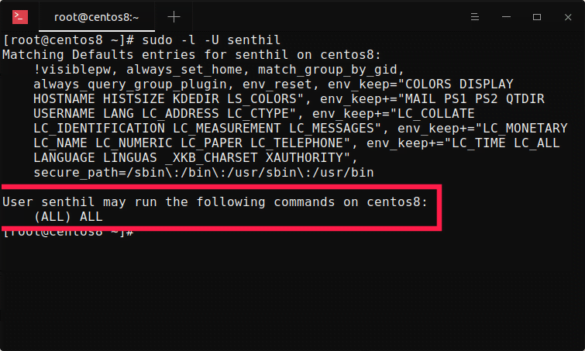

- #CREATE A USER WITH SUDO PRIVILEGES LINUX HOW TO#
- #CREATE A USER WITH SUDO PRIVILEGES LINUX UPDATE#
- #CREATE A USER WITH SUDO PRIVILEGES LINUX FULL#
- #CREATE A USER WITH SUDO PRIVILEGES LINUX PASSWORD#
Once you have added a sudo user, you can use the sudo command to execute commands with elevated privileges without logging in as the root user. ConclusionĪdding a sudo user in Linux is a straightforward process that involves creating a new user account, setting a password, and adding the user account to the sudo group. If the new user account has sudo privileges, the command should execute successfully. In this step, we verify that the new user account has sudo privileges by running a command with sudo. Step 5: Verify that the new user account has sudo privileges by running a command with sudo. In this step, we add the new user account to the sudo group using the usermod command. To use the sudo command, the user must be a member of the sudo group. The sudo command allows a user to execute a command with elevated privileges. Step 4: Add the new user account to the sudo group using the usermod command.
#CREATE A USER WITH SUDO PRIVILEGES LINUX PASSWORD#
Once you provide this information, the passwd command sets the new password for the user account. When you run this command, it prompts you to enter the new password twice for confirmation. The passwd command is used to set or change the password for a user account in Linux. Step 3: Set a password for the new user account using the passwd command. Once you provide this information, the adduser command creates a new user account with a home directory and some default settings.
#CREATE A USER WITH SUDO PRIVILEGES LINUX FULL#
When you run this command, it prompts you to enter some information about the new user account, such as the username, password, and full name. The adduser command is used to create a new user account in Linux. Step 2: Create a new user account using the adduser command. Instead, you can switch to the root user account temporarily using the su command. However, it is not recommended to use the root user account for everyday tasks, as it can be a security risk. The root user has full administrative privileges on a Linux system. Step 1: Log in as the root user or switch to the root user account using the su command. Let's go through each step in detail to understand what is happening. This command should list the contents of the root directory. Verify that the new user account has sudo privileges by running a command with sudo.Add the new user account to the sudo group using the usermod command.Replace username with the username of the new user account. In this case, the user is being added to the wheel group. The -G option adds the user to an additional group.

Let’s break down the command: The -m option creates a home directory for the user /home/user.
#CREATE A USER WITH SUDO PRIVILEGES LINUX HOW TO#
In this article, we will discuss how to add a sudo user in Linux. Instead, you can create a new user account with sudo privileges. In such cases, you can either log in as the root user or use the sudo command to execute the command with elevated privileges. Most of the time, you may not find the sudo group in RHEL-based distributions like Fedora or AlmaLinux.If you are using Linux, you might have come across situations where you need to perform administrative tasks that require root access.
#CREATE A USER WITH SUDO PRIVILEGES LINUX UPDATE#
$ sudo apt update Adding a New User to the Sudo Group by Modifying the /etc/sudoers File $ sudo usermod -aG sudo įinally, restart your current session and place sudo in front of any command to execute it with sudo privileges as shown. Then use the “ -a” flag (will append the user) with the “ -G” flag (in group) using the usermod command. Retype new password: Adding a New User to a Sudo Group using the Usermod Command $ sudo useradd Updating the Password for the New User AccountĮxecute the following command with your username to update the password using the passwd command: $ sudo passwd Specify the username in the following command to create a new user account. We will begin by creating a new user account.

Updating the Password for the New User Account.


 0 kommentar(er)
0 kommentar(er)
